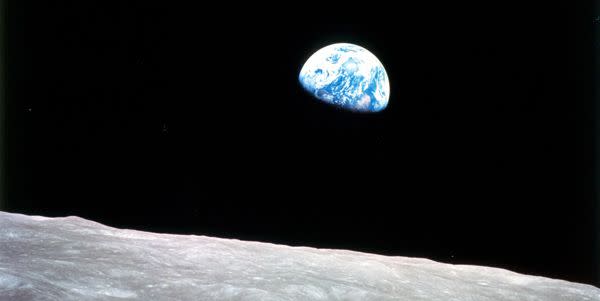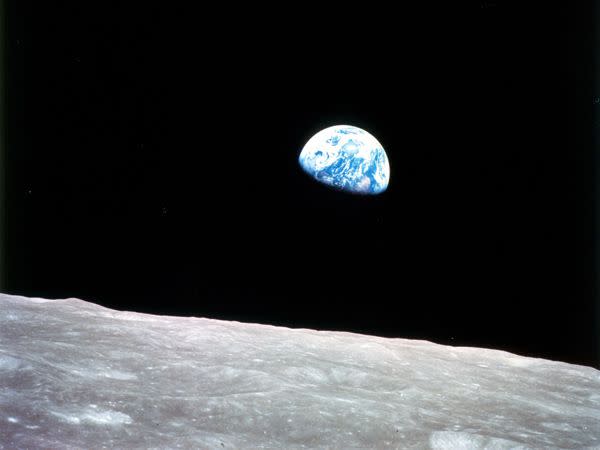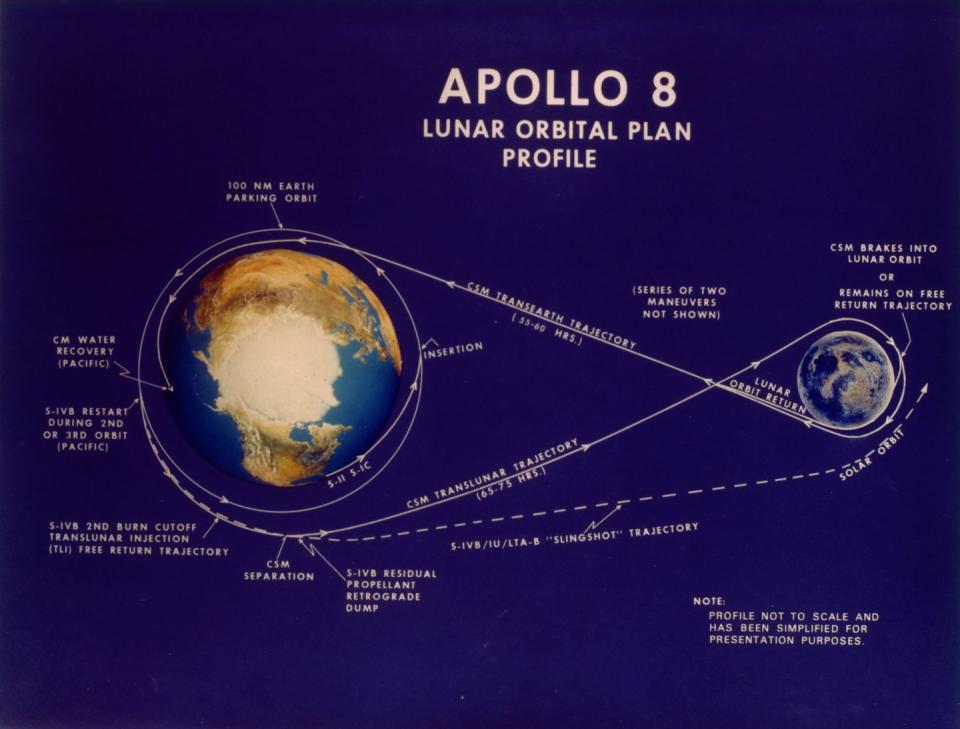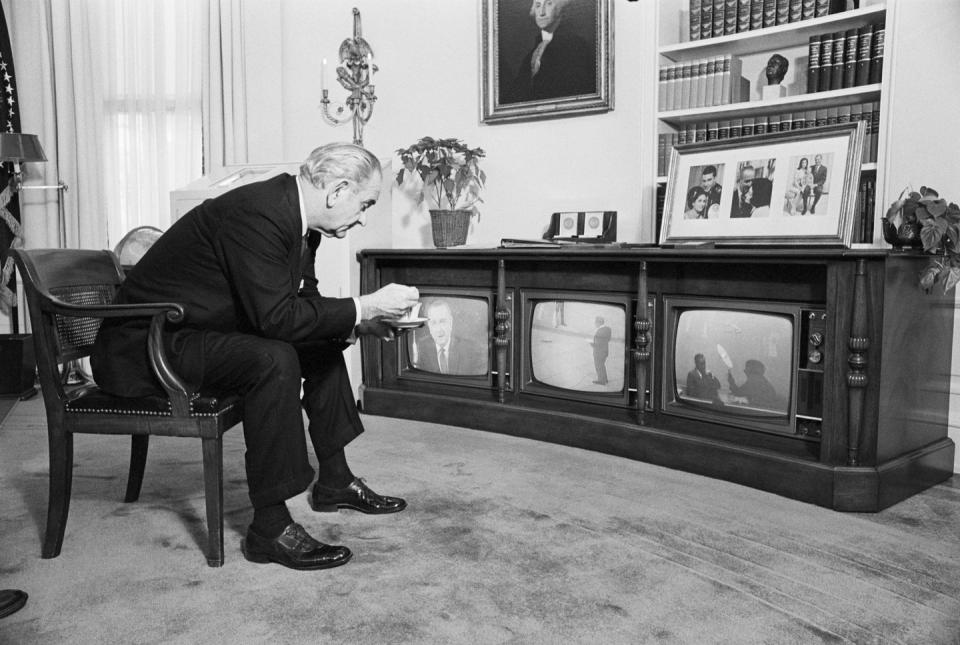On Its 50th Anniversary, Here's How Apollo 8 Changed the World

The small step for man, the giant leap for mankind, Eagle One, Buzz Armstrong, Neil Armstrong-Apollo 11 gets all the glory. Too often forgotten are the missions that came just before the boots on the ground, the ambitious dress rehearsals that were death-defying, hold-you-breath moments in their own right. Especially Apollo 8, the “everything but a landing” mission to the moon.
On the 50th anniversary of the Apollo 8 launch, it’s important to remember what this mission gave us.

On December 21, 1968, a Saturn V rocket blasted Frank Borman, Jim Lovell, and Bill Anders toward the Moon. By Christmas Eve, the trio was in orbit around the Moon, making 20 trips around it before returning to the Earth. It was the first time humanity had orbited another body that wasn’t our home planet.
And gave us the eternal Earthrise image-Anders’ haunting and beautiful view of a half-lit Earth rising above the horizon of the moon. This wasn’t the first picture of the whole planet from space-the year before, the ATS-3 probe took a picture of the entire Earth, which counterculture icon Stewart Brand urged NASA to release, hoping to jolt humanity into a global perspective. But Earthwise changed out perspective in the span of one photo.
Seen from 238,000 miles away-nothing, in cosmic terms-our world is a fragile marble of blue, half shrouded in darkness, unseeable. Earthrise was the first step toward the “Pale Blue Dot” perspective-that we are, as Carl Sagan would say, living “on an insignificant planet of a humdrum star lost in a galaxy tucked away in some forgotten corner of a universe in which there are far more galaxies than people.” And yet, as we saw ourselves from so far away for the first time, we realized how lush our world is compared to the desolation of our moon and the emptiness of space.
As the three astronauts rounded the moon, many families were gathering together for Christmas, so Apollo 8 sent a holiday message from space. First, they pointed out where humans would eventually land, displaying a lunar sunrise. They then took turns reading from the book of Genesis displaying creation as the Judeo-Christian tradition knew it-the opening text to both the Jewish Torah and the Christian bible.
They concluded the reading with, “And from the crew of Apollo 8, we close with good night, good luck, a Merry Christmas – and God bless all of you, all of you on the good Earth.” It was an extraterrestrial transmission to a night holy to many-a sort of “merry Christmas to all and to all a good night” to the world.

As the calendar turned to 1969, NASA would prepare the next steps that led to Aldrin and Armstrong’s July 20 landing on the moon. Apollo 9 would lift up to Earth orbit and test out the lander, while Apollo 10, in May 1969, tested the lander above the surface of the Moon-stopping short of a landing.
But it was Apollo 8 that, for the first time ever, proved the moon was within reach of human hands. Three travellers left the embrace of our world entirely to go somewhere so unlike Earth, and yet with a history so deeply intertwined with our planet’s. Their transmission reached rapt ears across the world. Their courage paved the way for the footsteps on the lunar surface.

Fifty years ago today, we hadn’t set foot on the moon yet. But we’d drawn the road map for the journeys ahead.
('You Might Also Like',)

